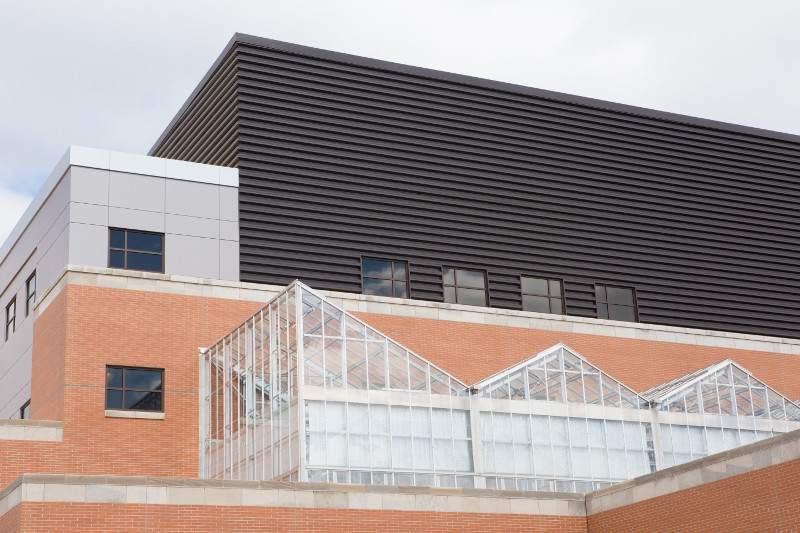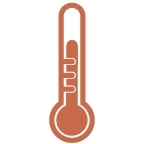Sustainability Spring 2015
Recovery specialist
Grand Valley’s new P. Douglas Kindschi Hall of Science is built to maximize recovery of both heat and water, which helps save resources, energy and money.
The 151,000-square-foot, four-story building will open in August. The project includes construction of the Marketplace, which opened in April. The Marketplace houses food services and the new university bookstore, now called GVSU Laker Store. Sustainability measures built into the new facility provide a 50 percent operating cost savings, a 27 percent reduction in energy costs, and help save up to two million BTU (British Thermal Unit)/ hours of heating energy.

The P. Douglas Kindschi Hall of Science is 151,000 square feet and four stories. It was built to maximize recovery of heath and water.
Heat recovery
Mechanical systems use heat recovery methods to increase building efficiency.
• Heat recovery chillers provide chilled water to cool IT closets and electrical rooms, while simultaneously providing heating capacity to spaces that require it.
• Heat recovery coils in the exhaust airstream can save up to 2 million BTU/hours of heating energy, saving up to $300 per day in building heating bills.
Water recovery
Stormwater management is a major component of the building design.
• During storms, runoff is captured, contained and reused.
• Collected runoff is filtered and used for irrigation on campus athletic fields and landscaped areas.
• Green roof reduces impervious areas and provides short-term collection and treatment of rainfall.
• Stormwater returns to a retention pond that was built in 2008 as part of the Kelly Family Sports Center project, which was oversized to allow for future expansion. Water from the pond is fed into the irrigation system on campus.


Architecture
• Reclaimed wood was used on the interior of the building, which provides a unique aesthetic along with a positive environmental impact.
• Limestone makes up part of the building’s exterior, reducing solar heat gain. On the inside, limestone helps regulate temperature, increasing efficiency.
• Classrooms use demand-based systems to generate operational savings, including air-sensing technology, occupancy sensors and controlled ventilation systems.
